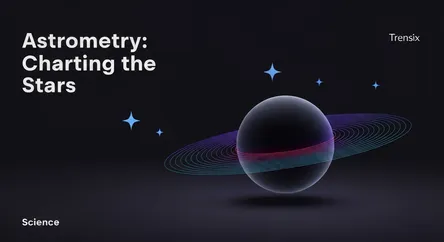Science
Astrometry: Charting the Stars

Discover astrometry, the science of precisely mapping stars and celestial bodies, and how it's revolutionizing our understanding of the galaxy.
What is it?
Astrometry is the branch of astronomy focused on precisely measuring the positions, distances, and movements of stars and other celestial objects. Think of it as cosmic cartography. For centuries, astronomers used astrometry to create star charts and track planetary movements. Today, it involves highly sophisticated instruments, both on the ground and in space, to create a dynamic 3D map of our universe. This data provides the fundamental framework for much of astrophysics, allowing scientists to understand the scale, structure, and motion of the cosmos.
Why is it trending?
Astrometry is experiencing a golden age, largely thanks to the European Space Agency's (ESA) Gaia mission. This space observatory is measuring the positions and motions of over a billion stars with unprecedented accuracy. Each data release from Gaia sparks a flurry of new discoveries about the Milky Way's structure, its history of galactic mergers, and the distribution of dark matter. It's also a powerful tool for discovering thousands of exoplanets and asteroids, making it a hot topic in astronomical research.
How does it affect people?
While astrometry might seem distant, its impact is profound. It underpins our entire understanding of our place in the universe, from the scale of our galaxy to the movements of objects within it. The precise measurements help test fundamental theories of physics, like Einstein's general relativity. On a practical level, astrometry is crucial for tracking near-Earth objects and satellites. It's the foundational science that allows us to navigate space, comprehend cosmic history, and protect our planet from potential impacts.